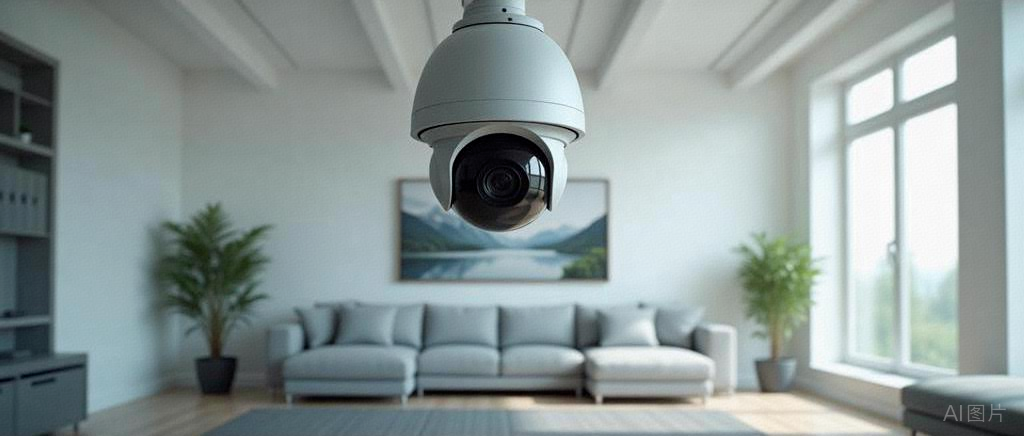Today, smart home products such as smart doorbells, home surveillance cameras, robotic vacuum cleaners, and smart speakers are becoming increasingly common in households. In March this year, the “data scandal” involving smart homes was exposed, revealing that smart home devices have become “eavesdroppers,” turning into “surveillance tools” in an instant, with cloud cameras becoming “leakage repositories.” Smart homes are facing a severe security situation. Since smart home devices are usually placed in relatively private areas of the home, require internet connectivity, are frequently used, and can widely collect user information while connecting with personal electronic devices like smartphones and computers, any security vulnerabilities in the software or systems of these devices can easily lead to attacks and intrusions on personal electronic devices and information systems, threatening user privacy. Therefore, it is necessary to take some security measures to protect user privacy.
Since smart home devices are usually placed in relatively private areas of the home, require internet connectivity, are frequently used, and can widely collect user information while connecting with personal electronic devices like smartphones and computers, any security vulnerabilities in the software or systems of these devices can easily lead to attacks and intrusions on personal electronic devices and information systems, threatening user privacy. Therefore, it is necessary to take some security measures to protect user privacy.
1. Choose Smart Home Products with Strong Security
Before purchasing smart home products, it is essential to conduct thorough “research.” Carefully review professional evaluations, user reviews, and select smart home products from reputable brands that are safe and reliable, prioritizing those that have passed relevant national security certifications or meet national safety standards. Investigate whether the manufacturer or product has had complaints related to security vulnerabilities, what security and privacy features the product has, and how to configure these security and privacy settings, avoiding products with vague privacy policies or overly broad permissions.
2. Enable Authentication
After installing smart home products, set up secure access methods for these devices through applications on smartphones, tablets, or computers. Some devices allow users to set passwords, PIN codes, or use multi-factor authentication, providing protection in case the password or PIN code is compromised. For example, biometric methods (such as facial recognition or fingerprint recognition) set up on smartphones or tablets can be used to verify user identity. Setting up multi-factor authentication can enhance the security and privacy protection of smart home products.
3. Strengthen Password Security
Manufacturers typically set simple, uniform default passwords for smart home products at the factory, and using these default passwords poses significant security risks. Therefore, after purchasing smart home products, users must set strong new passwords. Additionally, do not use the same password across multiple smart home products; if one is compromised, it can create a chain of security vulnerabilities in others. Many attacks on smart home devices are related to the use of the same password.
4. Enhance Privacy Settings
When initially setting up smart home devices or related applications, access permissions to device functions and data should be strictly limited. Carefully review the privacy settings on smart home products, allowing users to adjust these settings according to their needs, such as modifying the duration for saving video or audio, or prohibiting the transmission of user privacy information to manufacturers. If a user does not wish to use a certain function of a smart home device, it can be turned off, such as the user data storage function of a smart toilet, the Bluetooth unlocking function of a smart lock, or remote control functions with security vulnerabilities, thus better protecting personal privacy and enhancing security.
5. Automatically Update Smart Home Devices
Manufacturers frequently update smart home devices to fix security vulnerabilities and enhance privacy protection. Users can set devices to “automatic updates” to ensure timely updates of device firmware and applications, thus continuously ensuring the security of smart home products. If the device is relatively old and cannot receive updates anymore, it should be considered for replacement with a new device.
6. Isolate Smart Home Networks from Other Important Networks
The home Wi-Fi router is one of the key elements in ensuring home network security. A strong password should be set for the home network, and it should be changed regularly to reduce the risk of being cracked. Additionally, a separate network can be set up for smart home devices, as they are more susceptible to attacks; network isolation can effectively protect critical systems and information security.
7. Enhance Personal Information Security Awareness
Avoid discussing personal sensitive information, such as financial information, ID numbers, home addresses, and sensitive privacy, in front of smart home devices to prevent accidental recording and leakage. Do not casually connect unknown smart home devices to prevent malicious devices from stealing privacy data. When using smart home products, also strengthen security awareness, such as being cautious about installing and using surveillance cameras in relatively private spaces like bedrooms to avoid privacy and important information leakage.Source: Confidential Science and Technology